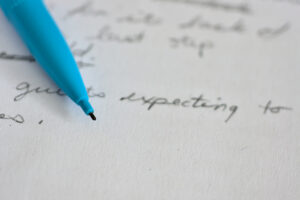
It is common to hear people advise writers to, ‘Write what you know.’ Everyone from granddaddies to customs officials will hand out this bit of information to aspiring writers as though it is the answer to everything. And in a way it is. Whether the advice giver knows it or not they are pointing out one of the most important aspects of writing. However, ‘writing what you know,’ doesn’t mean that if the writer is a mechanic they should only write about fuel injection and gaskets. It means that that person should reflect the world around them in an honest way. If that world includes cars and other mechanics then so be it as long as the artist is reflecting and revealing the world in a way that is truthful.
I know words like ‘reflecting’ and ‘truthful’ may sound ambiguous at first but bear with me for a moment.
Imagine a vast space with a prism in the center which has an infinite amount of sides. Each of these sides has a double-sided mirror which is both reflective and can be seen through at the same time. Around this prism are the individuals who make up society. Down in the right corner is an individual, we’ll call him an artist, who is looking into the prism, seeing the various sides, and piecing them together. From his point of view he can see the current epoch and constructs of our society. These trends he studies and marks down in his mind. However, since the prism is double-sided the artist can also be studied by society. When he realizes the duel nature of the prism he begins to have a dialogue with society.
At first their communication is broken at best. They communicate using written and spoken word as their language, but since the artist is new at this he has a tough time of it. Finally, after sometime the artist begins to see two things. First of all he notices that the language’s symbols (grammar, punctuation, inflection) are contingent on the epoch and constructs of society. He can’t just communicate with whatever he wants to. He has to learn their system. Second he begins to understand that once he has learned the system he can modify these symbols which can in turn have an influence on how the rest of society uses them.
In other words the symbols society uses are trendy. And understanding these trends can allow an artist to communicate with society as well as modify the direction in which these trends sway.

By examining the individuals around us and how they speak, we can find clues to their disposition. For example in England the use of a verifying sentence is very common. It is quite normal to hear people say, “It’s cold, isn’t it?” or “This cheesy toast isn’t very cheesy, is it?” On first examination the use of a verifying sentence seems to be a passive behavior. The communicator cannot really decide whether it is cold or cheesy. They have to ask the people they are interacting with to confirm this fact in order for them to be sure.
However, judging the use of a verifying sentence on its face value would be wrong. We all speak with subtext and inflections that alter the meaning. The symbols may at first seem to say one thing, but closer examination of the culture and the structure of the symbols shows that they probably mean something else. In truth, after we think about it, the verifying sentence seems to be more of a challenge. When someone says, “That film was rubbish, wasn’t it?” they are challenging the people they are communicating with to say otherwise. They are shoving their listener in the shoulder and saying, “Do you agree with me or not?”
As we can see by simply examining a commonly used sentence structure we can start to understand the culture that uses it. The symbols begin to tell us about the relationship between speaker and listener or writer and reader.
Let’s look at a second example. Over the last few years a whole system of abbreviations has popped up because of the use of text messaging and internet chat rooms. Abbreviations such as ‘lol’ or ‘rofl’ have become so common that when we read ‘rofl’ we no longer have to translate it into ‘rolling on the floor laughing.’ We automatically know that when someone writes ‘rofl’ they are indicating that they have found something funny. However, as we use these abbreviations more and more they seem to have changed from their original meaning to now be indications of someone’s disposition. If someone writes, “I didn’t mean anything by it, lol,” they are trying to communicate that they are ashamed and want to be allowed to laugh it off.
Since we can’t physically connect through the use of a computer or cell phone we have begun to develop a system of virtual gestures and tone to replace things such as shrugging or smiling.
- Exercise:
- As writers we need to spend time logically thinking about what the language of the people that surrounds us actually means. Only by doing so will we be able to ‘write what we know.’
- As an exercise you should spend time studying the world around you and listening to the conversations you encounter. Take one line you hear like, “Look at that Mexican kid playing in the dirt. That’s super sweet and super hilarious,” and think about what the person is actually stating about themselves and the culture around them. Then take your findings and write for ten minutes.
